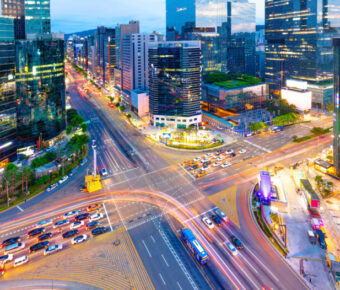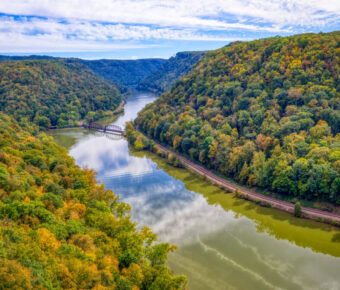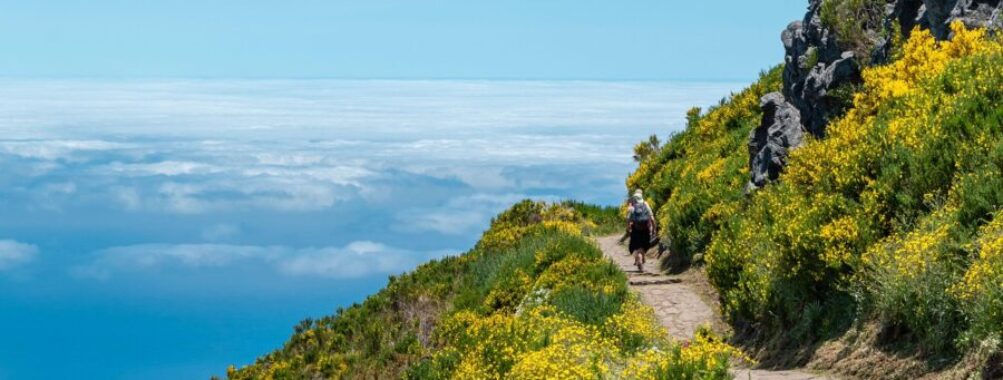
Best Time to Visit Madeira for Hiking: Discover Hidden Trails and Optimal Seasons for Adventurers
Hiking in Madeira isn’t just something to tick off your list—it’s a full-on sensory adventure. You’ll catch the scent of wildflowers, watch clouds race over green peaks, and stumble onto coastal views that honestly don’t look real. If you’re wondering when to visit, aim for late spring to early autumn—April through October is when the trails dry out and the weather stays mild, but not sweat-inducing. Madeira’s got everything: easy cliff walks, tough mountain climbs, and those legendary levadas that wind through the heart of the island.
Ever picture yourself wandering through misty laurel forests or hiking a famous levada with barely anyone else around? Madeira’s the spot. But here’s the thing: timing really changes the whole vibe. Some months bring wildflower explosions, others mean quieter trails, and, well, the weather can flip the script on you.
Table of Contents
- Key Takeaways
- Understanding Madeira’s Climate for Hikers
- Subtropical Climate Explained
- Seasonal Weather Patterns
- How Madeira’s Microclimates Affect Hiking
- Best Seasons for Hiking in Madeira
- Spring: Florescence and Ideal Conditions
- Autumn: Tranquility and Comfortable Trails
- Month-by-Month Guide to Hiking in Madeira
- April to June: Blooms and Pleasant Temperatures
- September to November: Mild Weather and Fewer Crowds
- Essential Hiking Trails and Natural Landmarks
- Levada Walks and Panoramic Routes
- Summits: Pico Ruivo and Pico do Arieiro
- Fanal Forest and Enchanting Woodlands
- Planning Your Madeira Hiking Adventure
- Creating a Madeira Hiking Itinerary
- What to Pack for Every Season
- Hiking Events and Cultural Experiences
- Flower and Wine Festivals for Hikers
- Local Celebrations on the Trails
- Other Outdoor Activities to Combine With Hiking
- Whale and Dolphin Watching Experiences
- Exploring Natural Lava Pools and Beaches
- Botanical Gardens and Cable Car Adventures
- Tips for Visiting Madeira During Different Seasons
- Avoiding Peak Tourist Times
- Winter in Madeira: Pros and Cons
- Frequently Asked Questions
- What months offer the most favorable weather for hiking in Madeira?
- How does Madeira’s rainy season affect available hiking trails and conditions?
- Can you recommend the best regions in Madeira for a multi-day hiking excursion?
- What are the pros and cons of hiking in Madeira outside the peak tourist season?
- Which hiking routes in Madeira are known for the most stunning floral displays, and when can they be seen?
- Are there any particular times of the year when Madeira’s hiking trails are less crowded?
- Book Your Dream Experience
- More Travel Guides
Key Takeaways
- Late spring through early autumn hits the sweet spot for hiking Madeira.
- Trail conditions change month by month, so plan ahead.
- You’ll find top trails, real tips, and even a few cultural gems for hikers.
Understanding Madeira’s Climate for Hikers
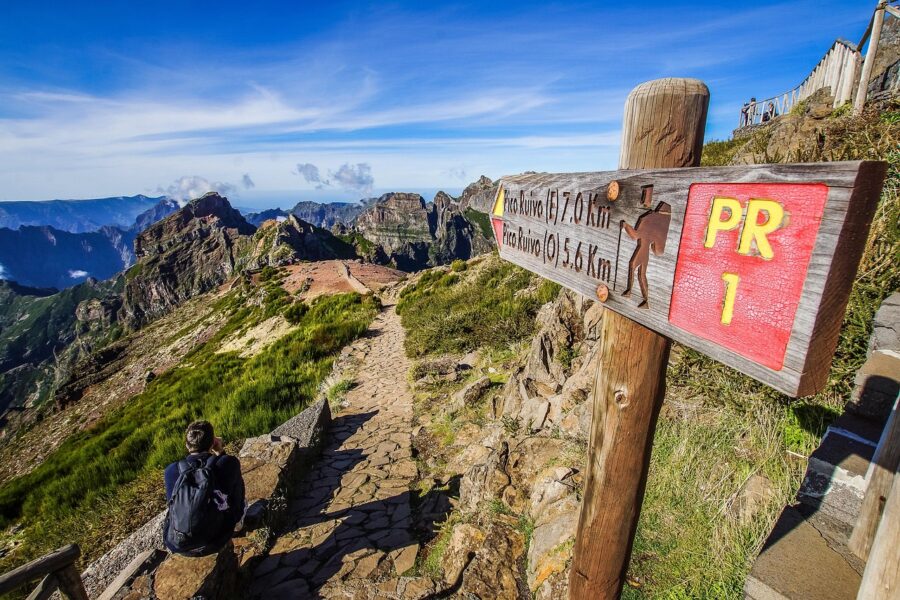
Madeira’s known for its mild climate, lush green everywhere, and honestly, some pretty unpredictable weather. If you want to make the most of every trail, you’ll need to get a handle on what the island’s weather can throw at you.
Subtropical Climate Explained
They call Madeira the island of eternal spring, and I get why. The subtropical climate means you’ll have gentle, warm temps all year. Summer rarely tops 27°C (about 80°F), and winter? No snow, no frost—just pack a light jacket if you’re heading up high.
Humidity can sneak up on you. I’ve started hikes under a blue sky, only to get hit by a cool, misty breeze on the trail forty minutes later. Seriously, bring layers. Even when it looks sunny, the wind in the mountains can chill you fast. I once shivered my way through a misty hike in May because I thought a t-shirt would cut it—big mistake.
Seasonal Weather Patterns
April through October is prime time for hiking. You get more sun, longer days, and the trails dry out. Spring (March to May) is a treat for anyone who loves flowers—those hillsides just explode with color, and the air? It’s like nature’s own perfume.
Summer along the coast can feel warm, but up in the forests or mountains, it’s usually just right for walking. October can go either way—you might catch late summer warmth or run into a few rain showers. From November to February, expect more clouds, fog, and the occasional downpour, especially if you’re hiking up north. If blue skies are your thing, stick to late spring or early fall.
How Madeira’s Microclimates Affect Hiking
Madeira’s weather is a bit of a wildcard. The mountains and deep valleys chop the island into little weather zones. I’ve started hikes in sunshine, only to watch clouds roll in and cool things down halfway through. Sometimes you’ll wish you wore shorts, then suddenly you’re grateful for that hoodie you almost left behind.
The north, especially around the Laurisilva forest, stays cooler and wetter. Head south towards Funchal, and you’ll usually find more sun. I always check weather apps before heading out, but honestly? Don’t trust them too much—Madeira likes to surprise you. If you’re hitting the higher trails, pack for everything: sun, wind, clouds, maybe even a quick shower. That unpredictability is half the fun, right?
Best Seasons for Hiking in Madeira
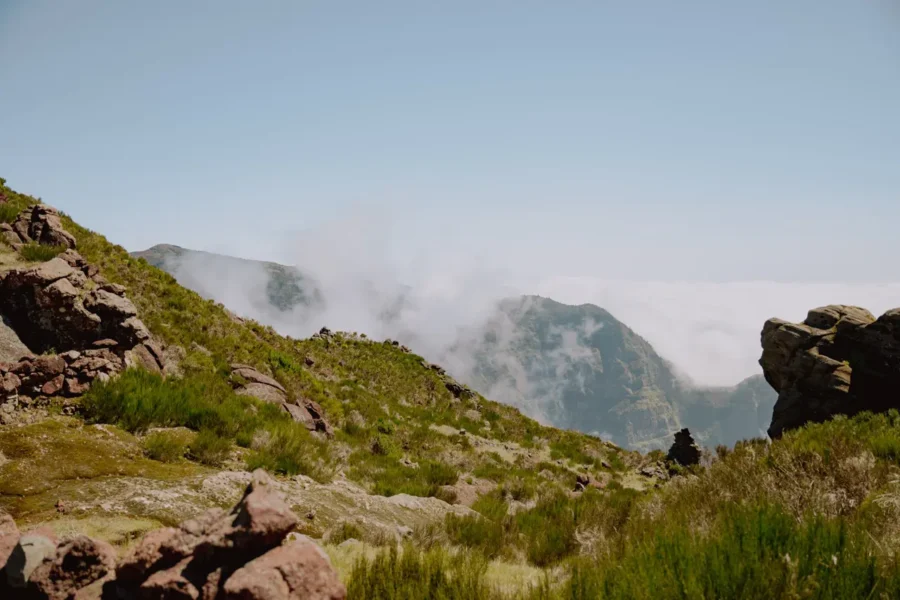
If Madeira’s green mountains are calling your name, picking the right season can totally change your trip. Weather, flowers, crowds—it all shifts with the months.
Spring: Florescence and Ideal Conditions
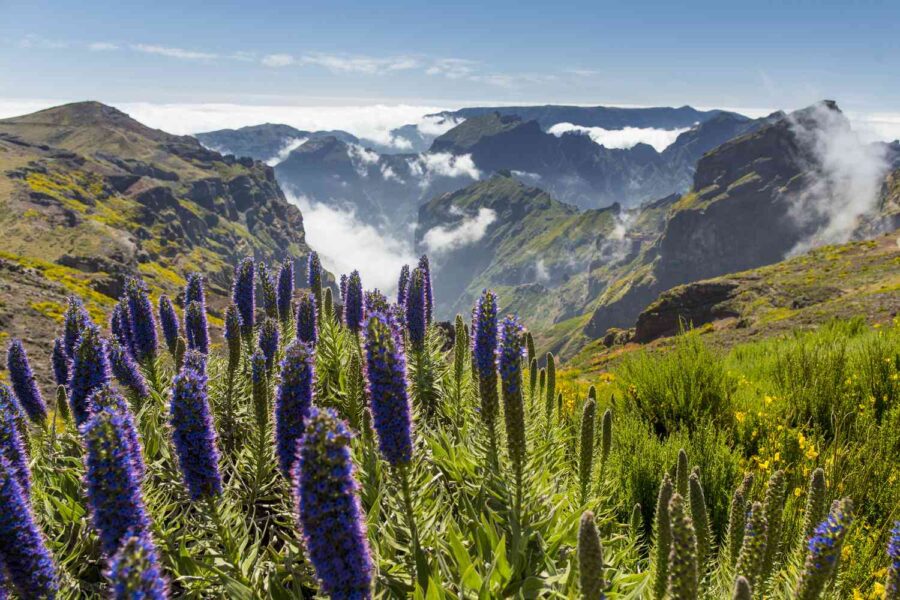
Spring in Madeira? Pure magic. By March, wildflowers start popping up everywhere—valleys turn technicolor. You might want to time your visit for the Madeira Flower Festival or the Funchal Flower Festival, usually late April or May. It’s a wild parade of flower carpets, music, and streets that smell like, well, actual flowers.
But it’s not just about the festivals. Spring trails are at their best—warm but not hot, barely any rain, and the air feels ridiculously fresh. I’ve hiked levadas this time of year, and honestly, nothing beats walking through clouds of blooms.
Crowds definitely show up in spring, especially around the festivals. Hotels fill up fast, so if you want a good spot (or any spot), book early. Sharing the trails with other flower fans? Worth it, if you ask me.
Autumn: Tranquility and Comfortable Trails
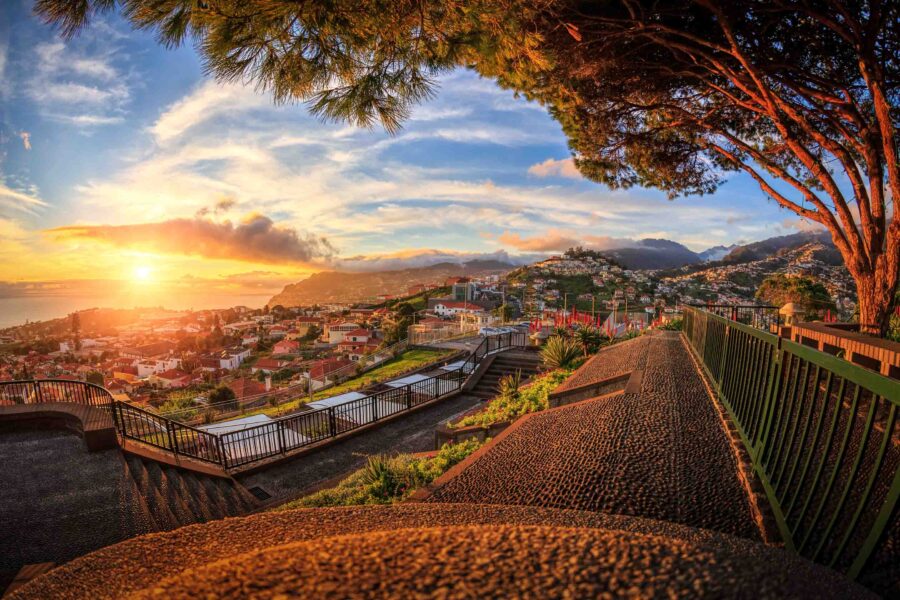
Autumn in Madeira doesn’t get enough love, but it’s a hidden gem. From September to November, the summer crowds disappear. The hills stay green, the air gets a bit crisper up high, and hiking just feels easier—you’re not sweating through your shirt on every climb.
If you crave peaceful walks and quiet trails, autumn’s your season. I’ve done sunrise hikes in October where I barely saw another soul. The weather’s still kind most days, but bring a light jacket for those cool evenings and mountain breezes.
Trails stay in good shape, the island slows down, and you can actually linger in restaurants or cafes without feeling rushed. Most spots are still open, but now you get to enjoy them at your own pace. Honestly, autumn is when Madeira feels like your own private hiking haven.
Month-by-Month Guide to Hiking in Madeira
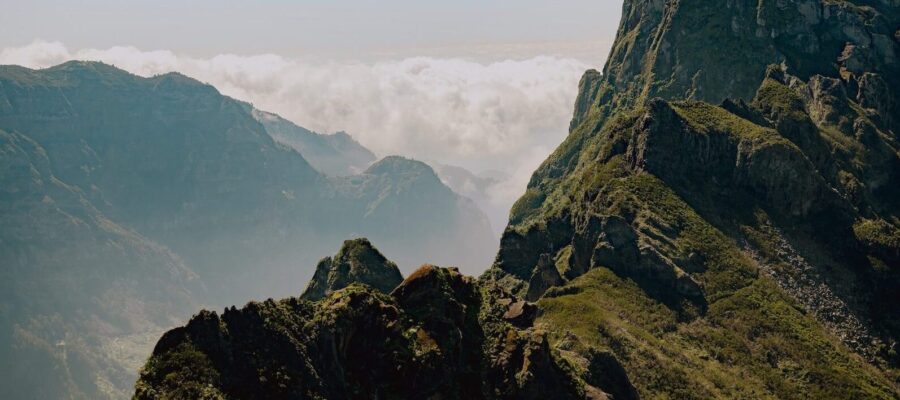
You can hike in Madeira pretty much any time, but some months just give you more—whether it’s wildflowers, quieter trails, or local festivals.
April to June: Blooms and Pleasant Temperatures
Spring is tough to beat. April through June, the island looks like it’s dressed up for a party—wildflowers everywhere, especially during the Flower Festival in Funchal. You’ll catch those scents before you even hit the trail.
Temperatures stay comfy, usually between 18°C and 24°C (about 64-75°F). On my last trip, my jacket barely left my bag except for a couple crisp mornings up high.
The island does get busier as summer holidays approach. If you want more space, hit the trails on weekdays. Accommodations around Funchal go fast, so plan ahead. The early festival buzz adds a fun backdrop—sometimes you’ll hear music drifting through the valleys.
September to November: Mild Weather and Fewer Crowds
Once summer crowds fade, autumn brings a relaxed, grown-up vibe. Weather stays pleasant—around 20°C to 26°C (68-79°F)—and you’ll find fewer big groups on the popular levadas. I hiked here in October and sometimes felt like I had the island to myself.
No huge flower festivals, but you might stumble into a harvest celebration in a tiny village. That’s where I’ve sipped the best poncha and chatted with locals about the grape harvest. Bring a light raincoat—autumn sprinkles show up, especially in the hills, but trails rarely close.
For your itinerary, Funchal makes a great base. Rooms are easier to find and often cheaper. Evenings are perfect for wandering after a hike, and you can grab custard tarts at the bakeries without a wait. If you love quiet trails and open views, these months are Madeira at its best.
Essential Hiking Trails and Natural Landmarks
Madeira’s landscape is a playground for hikers—think lush forests, dramatic peaks, and garden-like corners that feel like you’ve stumbled into a secret. With levada walks, mountains, and dreamy woodlands, there’s always something new around the bend.
Levada Walks and Panoramic Routes
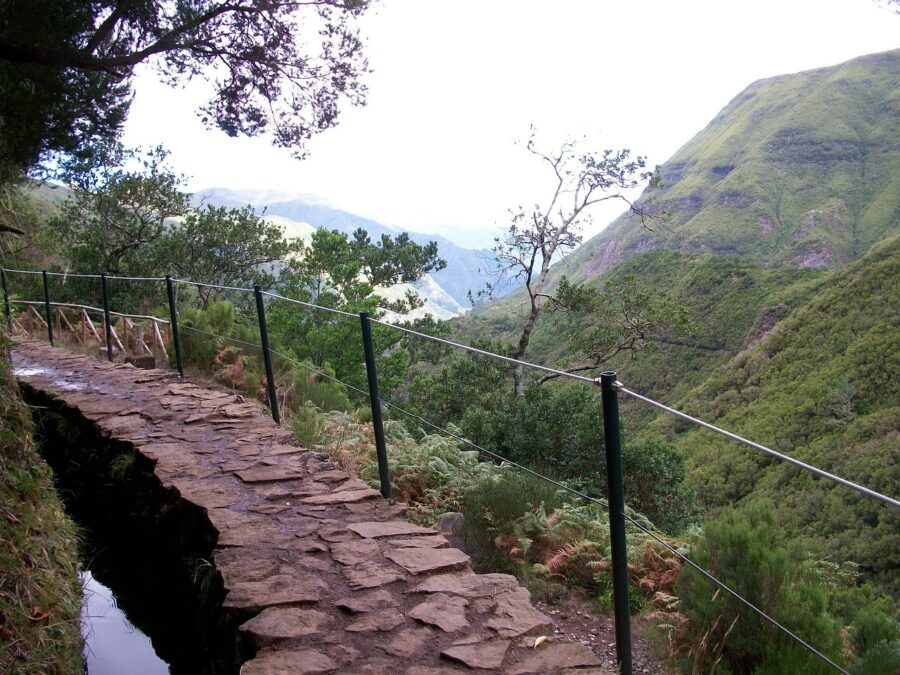
If you haven’t tried a levada walk, you’re in for something special. These narrow water channels snake through the mountains, leading you past ferns, mossy cliffs, and—if it’s spring—bursts of wildflowers.
Levada do Caldeirão Verde is a personal favorite for waterfalls and those cool, mossy tunnels. Some levadas are easy, like a stroll in a giant botanical garden. Others, like Levada das 25 Fontes, get slippery after rain. Wear shoes with grip and always pack a rain jacket, even in summer. Madeira’s weather doesn’t always play nice.
Many routes finish (or start) at viewpoints that’ll make you stop and stare. If you’ve got energy, link up a few levadas for a full day on the move.
Summits: Pico Ruivo and Pico do Arieiro
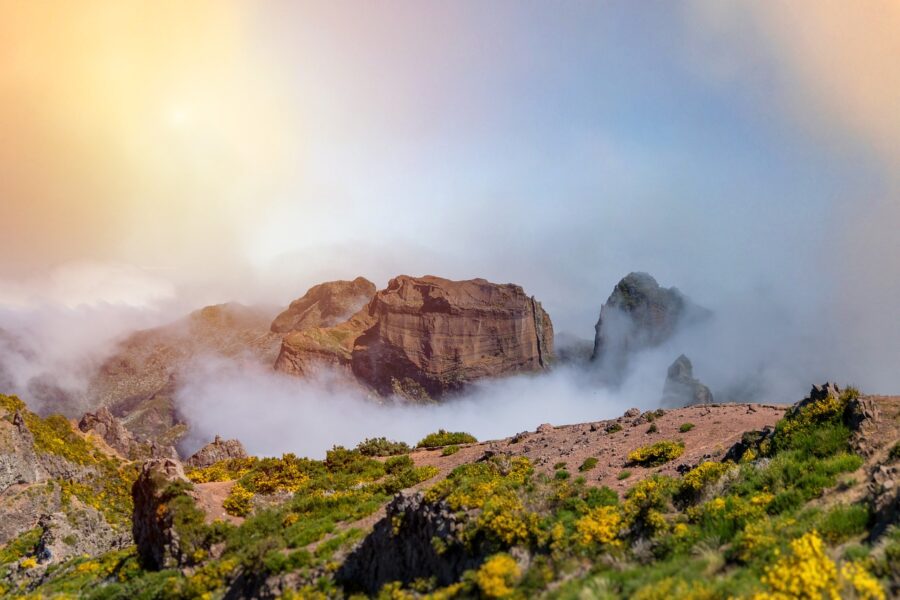
Ready for a real challenge? The trail between Pico do Arieiro and Pico Ruivo is the one to beat. These are Madeira’s highest points, but you don’t have to be a hardcore mountaineer to enjoy them.
The path can get exposed and steep, but the cloud seas and razor-sharp ridges make every step worth it. On a clear day, you’ll see forever—down to the villages and across to other peaks.
Give yourself plenty of daylight. Mountain weather turns on a dime. I’ve started in sunshine, only to end up in thick mist by lunchtime. But when you catch it on a blue-sky morning, standing on Madeira’s roof feels unbeatable.
Fanal Forest and Enchanting Woodlands
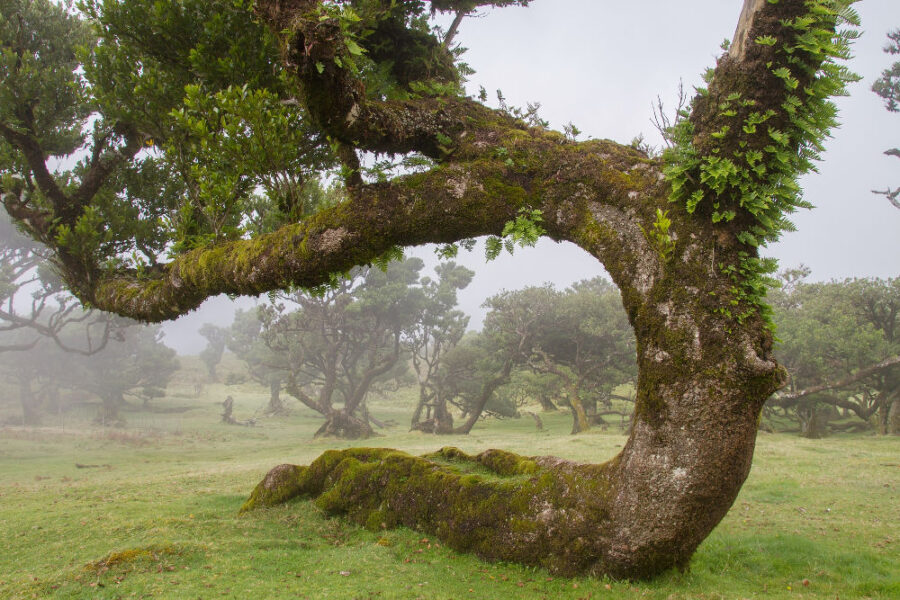
For something softer, Fanal Forest is pure fairytale. Ancient laurel trees twist into wild shapes, and on most mornings, a thick mist wraps everything in a dreamlike haze.
You don’t need to hike for hours—there are short loops and longer trails, all padded with moss and crunchy leaves. Fanal is calm and just a little eerie, especially when the fog rolls in.
You’ll probably run into a few cows on the path. Bring your camera, but also just stop and soak it up. It’s a little pocket of magic for anyone willing to wander off the main track.
Planning Your Madeira Hiking Adventure
If you want to get the most out of Madeira’s trails, plan smart. Weather, terrain, and crowds can shift a lot from one part of the island to another, so a little research goes a long way.
Creating a Madeira Hiking Itinerary
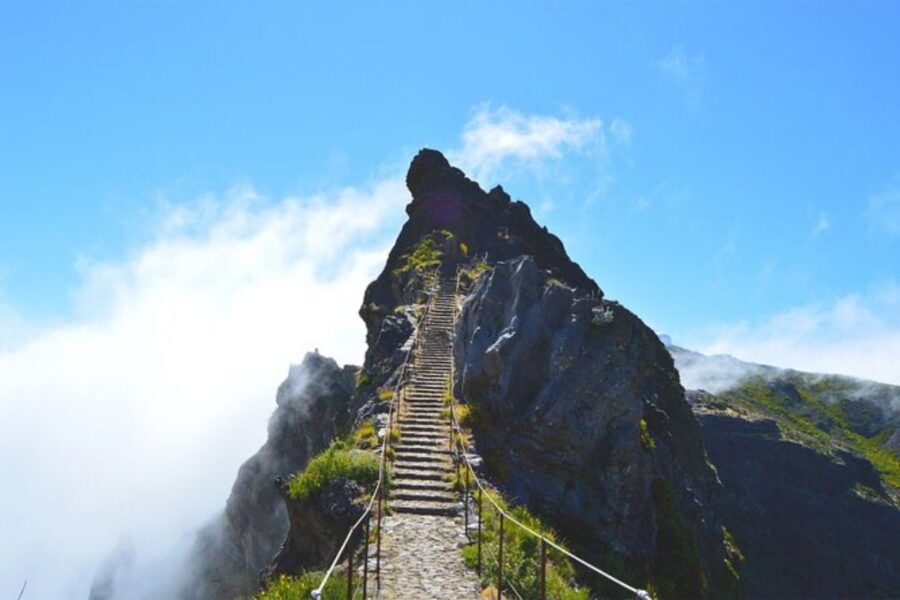
If you’re hoping to hike in Madeira, spring and early autumn are usually your best bets. The weather’s cooler up in the mountains, rain isn’t as relentless, and you won’t have to elbow your way through crowds.
Start by being honest with yourself about your fitness level. Some levada trails are gentle and flat, but spots like Pico Ruivo? They’ll test you. Don’t cram your days with too many hikes—pick a couple of classics like Levada Caldeirão Verde or the wild Vereda da Ponta de São Lourenço and give them the time they deserve.
When you plan your trip, try to stay near the trails you’re most excited about. Madeira’s roads can wind on forever, and you really don’t want to waste precious daylight in traffic. I usually hunt for flights and places to stay on Kayak or Booking.com to compare options quickly. And honestly, leave yourself some room to just chill—grab a seaside meal, watch the sunset, or nap by the pool. It’s not a race.
What to Pack for Every Season
Madeira’s weather loves to keep you guessing, especially as you climb higher. I’ve been roasting on the coast and shivering on a peak the same day, so I always layer. A lightweight rain jacket is non-negotiable, and I stash a warm fleece for the mountains, even if the beach feels like summer.
Good shoes are a must—think trail runners or boots with solid grip. Trails get rocky, sometimes muddy, and you’ll thank yourself for the extra traction. Don’t skip sunscreen, even if clouds roll in. I always toss in a hat, a refillable water bottle, and a swimsuit—never know when you’ll stumble onto a hidden swimming spot. I’ve found that daypacks and compact travel gear from sites like Amazon make life easier on the trails.
No matter when you visit, pack for surprises. Madeira has a way of throwing curveballs, and being ready is half the adventure.
Hiking Events and Cultural Experiences
Madeira isn’t just about wild cliffs and ancient trails. If you’re lucky, you’ll stumble into a festival or local tradition that turns a hiking day into something you’ll never forget. It’s the music drifting through Funchal, the scent of grilled espetada, or a glass of poncha that makes hiking here feel different from anywhere else.
Flower and Wine Festivals for Hikers
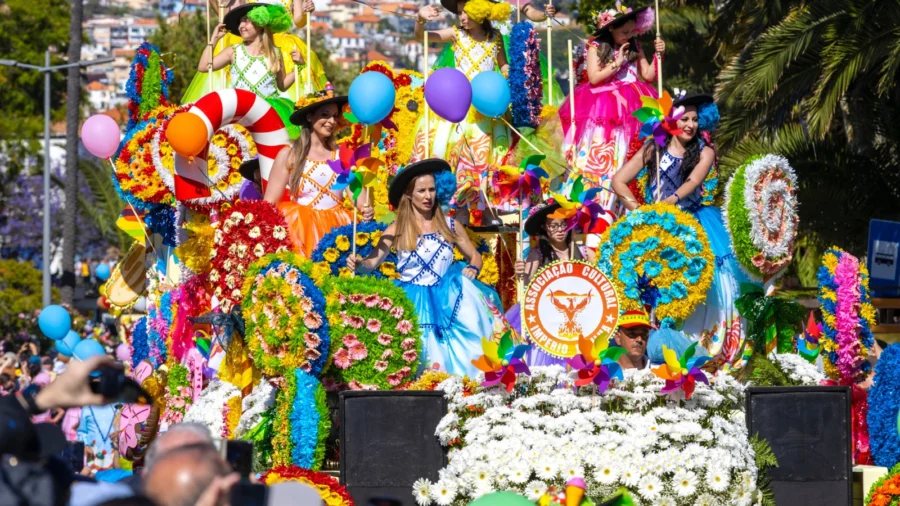
Spring hikers get the real jackpot—Madeira’s Flower Festival in late April or early May. Funchal bursts with color, and you’ll see flower carpets, floats, and kids tossing petals everywhere. It’s honestly hard not to get swept up in the joy, especially if you’ve just come off a morning hike.
These parades sometimes wander right onto the old levada paths. Locals hand out little bouquets, and I’ve even had a stranger tuck a flower behind my ear. Maybe it sounds corny, but it’s the kind of thing you remember.
If you’re hiking in September, you might wander into the Wine Festival. After a sweaty trek, landing in Funchal’s main square to find grape-stomping, live music, and wine tastings feels like a reward. I’ve tasted Madeira wine I still think about years later.
City trails fill with stalls selling traditional poncha—a sweet, punchy mix of sugar cane rum, honey, and lemon. These festivals aren’t just a bonus for hikers; they’re your chance to see Madeira’s real spirit.
Local Celebrations on the Trails
One thing that always surprises me about Madeira: you can hike into a tiny village and find a festa in full swing. Summer brings out community feasts, with roadside grills sizzling espetada and locals belting out folk songs. I once joined a dance after a long hike—completely underdressed, but nobody cared.
Sometimes you’ll see tables set up right next to a levada, so you can have a picnic lunch beside a centuries-old waterway. Don’t act shocked if someone hands you homemade poncha—it’s just how things go here.
There’s this easygoing, welcoming vibe on Madeira’s trails that turns strangers into friends. Food stands, impromptu music, and locals eager to swap trail stories are all part of the fun.
Pro tip: Ask your guesthouse about upcoming festas or local events. You might want to tweak your hiking plans to catch something special you’d never find in a guidebook. I’ve never regretted making room for a local celebration.
Other Outdoor Activities to Combine With Hiking
If you only hike in Madeira, you’re missing out—there’s so much more. From spotting dolphins out at sea to relaxing in volcanic pools or wandering lush gardens, the island’s full of surprises.
Whale and Dolphin Watching Experiences
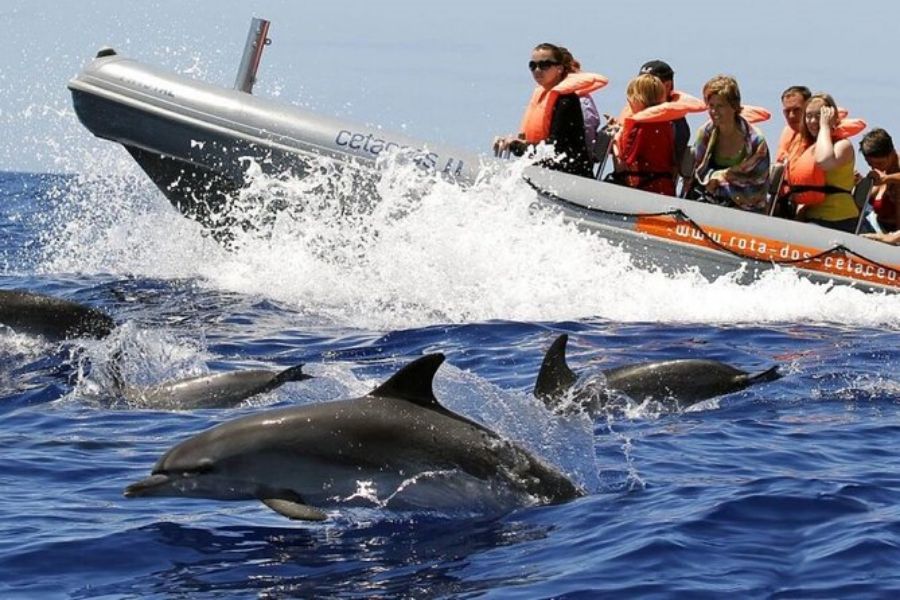
Madeira’s Atlantic waters are a hotspot for whale and dolphin sightings. You can spot playful bottlenose dolphins and even sperm whales all year.
Boat tours leave from Funchal and other ports almost daily. I’ll never forget leaning over the rail as dolphins zipped by, close enough to splash me. Bring a hat—the sun out there can be brutal. Sometimes you wait for whales, but the guides are great at spinning stories and keeping things lively.
I like to book a whale watching cruise as a break from hiking. It’s worth checking out a few organized tours for different experiences.
Exploring Natural Lava Pools and Beaches
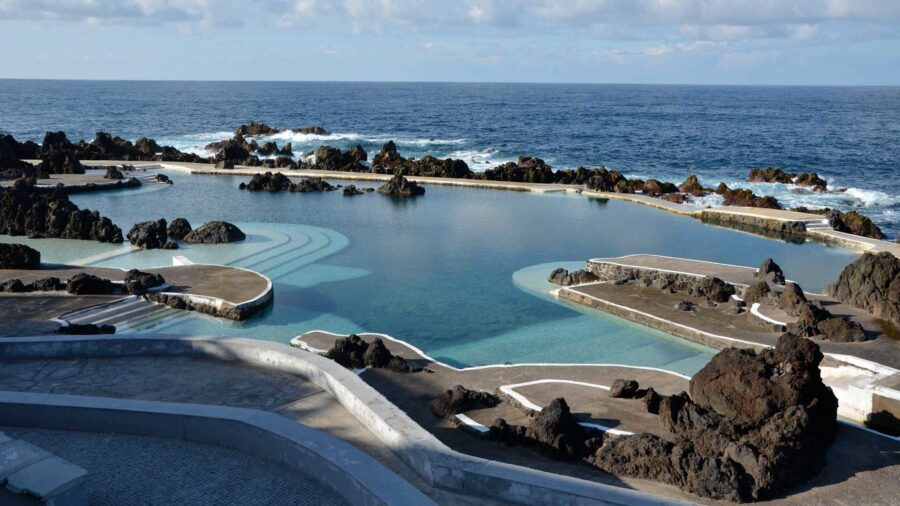
Madeira’s coast isn’t about sandy beaches. Instead, you get dramatic natural lava pools, especially around Porto Moniz. These clear pools let you swim with Atlantic waves crashing just beyond—no need to worry about strong currents.
After a long hike, slipping into a cool lava pool feels like heaven for tired legs. The black volcanic rocks look stunning, but they’re sharp and slippery, so water shoes are a smart move. I never skip this on my trips—floating in a pool carved by ancient lava is an experience you won’t find anywhere else.
For a different vibe, Seixal Beach has striking black sand and epic mountain views. If you’re lucky, you’ll catch locals surfing or cliff-jumping in the summer.
Botanical Gardens and Cable Car Adventures
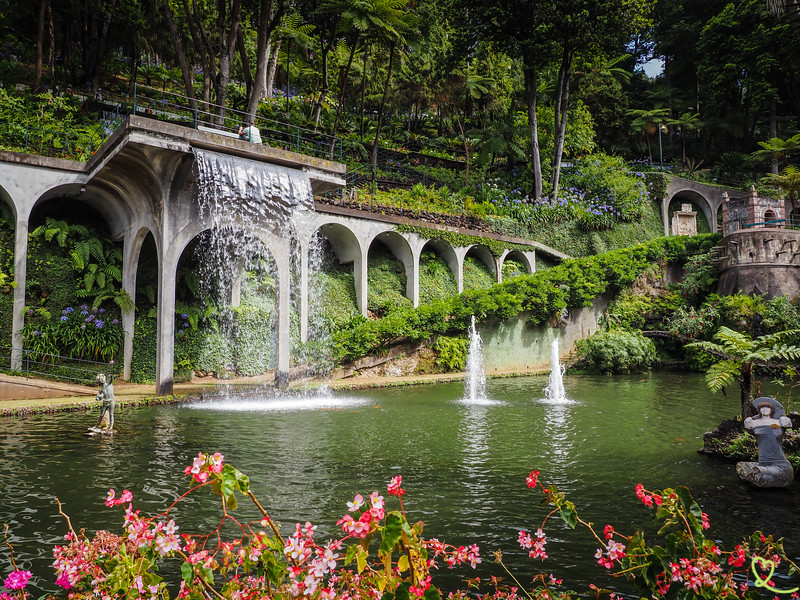
Need a slower pace? Madeira’s botanical gardens will blow you away. In Funchal, the Monte Palace Tropical Garden overflows with exotic flowers, koi ponds, and winding paths. Even if you’re not a plant nerd, you’ll find something to love—those ancient dragon trees and rare orchids are just wild.
Getting there is half the fun. Hop on the cable car from the old town, and you’ll get jaw-dropping views over Funchal and the sea. If you’re up for it, ride a traditional wicker toboggan down the hill. I tried it once—laughed the whole way and almost lost my hat.
You can find botanical and cable car tours that include entry and sometimes a guide. Bring your camera—these gardens are a photographer’s playground.
Tips for Visiting Madeira During Different Seasons
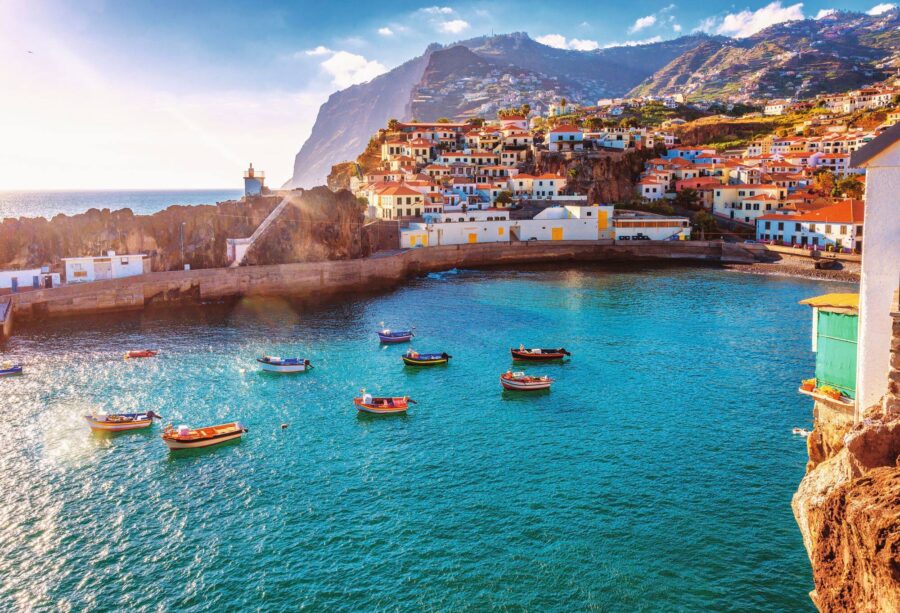
Timing your Madeira trip is about more than just chasing sunshine. Knowing when crowds show up and what winter really means here can help you plan smarter and maybe even land a better hotel deal.
Avoiding Peak Tourist Times
I’ll be honest—crowds can kill the vibe. Madeira’s busiest times are June to early September, and around Christmas and New Year’s. Trails get crowded, hotels fill up, and prices climb. You’ll even find lines on the famous Levada walks, which isn’t exactly the wilderness escape most people want.
I always aim for late spring or early autumn. April to early June is a sweet spot—flowers bloom, trails are quiet, and the weather’s just right. October’s great too. If you can travel midweek or just after a holiday rush, you’ll dodge most of the crowds.
For an even quieter trip, check out lesser-known trails or smaller villages instead of sticking close to Funchal. Oh, and book your car rental early—during peak times, they really do run out.
Winter in Madeira: Pros and Cons
Winter trips here can be a mixed bag. From December to February, you get fewer tourists, better hotel deals, and a calm atmosphere that’s hard to find in summer. If you love having trails mostly to yourself, winter delivers.
But don’t expect endless sunshine. Temperatures on the coast hover around 15–20°C, but the mountains get chilly and rain shows up more often. Some trails turn to mud or close after storms. I’ve forgotten my rain jacket before—big mistake. Always bring layers and waterproof gear.
If you’re flexible and don’t mind last-minute changes, you’ll love winter hiking. The forests turn emerald, waterfalls roar, and there’s a wild beauty to it all. Check the weather before you head out, and don’t be afraid to change plans if things get rough.
Frequently Asked Questions
Madeira’s a dream for hikers, but the weather and trail conditions swing wildly through the year. Getting the details right can mean the difference between a crowded slog and a magical escape.
What months offer the most favorable weather for hiking in Madeira?
In my experience, April to June brings the clearest skies and mild temps—pretty much ideal for hiking. September to November works too. I always carry a light jacket, since mountain weather can flip fast.
How does Madeira’s rainy season affect available hiking trails and conditions?
December to February brings more rain, which can turn some trails into mud baths or even wash them out. Levadas can overflow; I once found a dry path turned into a stream overnight. Stick to lower trails and wear solid boots—you’ll still find plenty of good walks.
Can you recommend the best regions in Madeira for a multi-day hiking excursion?
If you’re after big views and a bit of adventure, the central mountains between Pico do Arieiro and Pico Ruivo are hard to beat. The north, near São Vicente and Santana, has epic levada routes for multi-day hikes. I’m also a fan of the Laurisilva forest near Rabaçal when I want something quieter and green.
What are the pros and cons of hiking in Madeira outside the peak tourist season?
Step onto Madeira’s trails outside the busy months and, honestly, you’ll feel like you’ve got the whole island to yourself. There’s this rare, tranquil vibe—sometimes it feels like you’re wandering through your own private garden.
But here’s the catch: the weather can throw you a curveball, and you might notice guided tours or mountain shuttles are harder to find. Still, I’ve found that off-season travel usually means you’ll land better deals on accommodation, and you won’t have to dodge crowds in your photos.
Which hiking routes in Madeira are known for the most stunning floral displays, and when can they be seen?
If you’re into wildflowers (and who isn’t, really?), you’ve got to walk the levadas in spring—think March through May. The Levada do Caldeirão Verde, plus the trails crisscrossing Paul da Serra, explode with color then.
You’ll spot orchids, agapanthus, and even some rare laurel blooms if you slow down and really look. Sometimes, I just stop and wonder why more people don’t talk about how lush these paths get.
Are there any particular times of the year when Madeira’s hiking trails are less crowded?
If you swing by in late autumn or early winter—think November to early December—you’ll probably have the trails almost to yourself. Well, unless you’re around at Christmas, when locals tend to get out and stretch their legs a bit more.
Late January works too. I’ve wandered these paths midweek during those months and, honestly, most of the time I just bumped into a goat or two.
